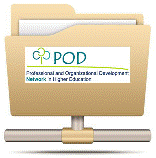Professional and Organizational Development Network in Higher Education
Date of this Version
2008
Citation
Essays on Teaching Excellence: Toward the Best in the Academy (2007-2008) 19(1)
A publication of the Professional and Organizational Development Network in Higher Education
Abstract
Much has been written about the use of collaborative learning as a pedagogical tool to enhance student learning. Collaborative learning, or group work as it is commonly known, can be defined as a structured process where students are required to work in groups to complete a common task or assignment for a particular course. It has been identified as one of the most effective ways for students to become actively engaged in classroom activities (Davis, 1993; McKeachie, 1999; Nilson, 1998).
Although there are many positive aspects of group work, there are negatives as well. One particular problem occurs when students are confused about faculty expectations involving the work product of teams. More specifically, students often have difficulty determining how much of a group product, if any, is to be created by an individual. The intervention of faculty can play a key role in shaping student’s perception of group work and other forms of collaborative learning opportunities.
Included in
Curriculum and Instruction Commons, Educational Assessment, Evaluation, and Research Commons, Higher Education and Teaching Commons, Scholarship of Teaching and Learning Commons


Comments
Copyright 2008, Tuesday Cooper. Used by permission